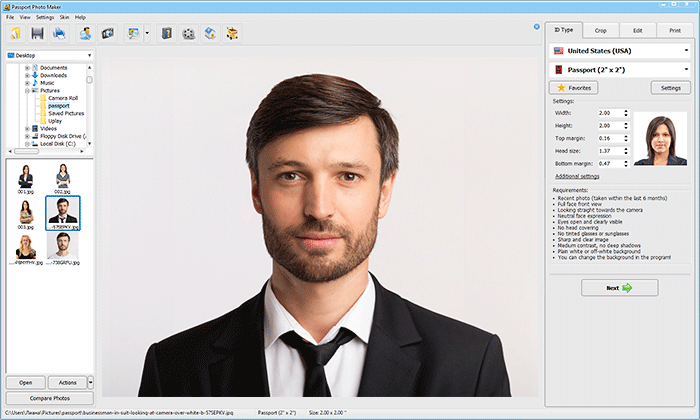Remember sepia-toned MySpace avatars and grainy Instagram squares? The online world’s photo editing journey has been a fascinating one, transforming from clunky, pixelated playgrounds to sleek, accessible interfaces with mind-blowing capabilities. We’ve come a long way from basic brightness sliders and pre-packaged filters – today, online tools rival dedicated software, wielding the power of artificial intelligence to enhance, reshape, and even animate our cherished snaps. Dive with us into this dynamic landscape, where accessibility meets innovation, and every click unveils a new brushstroke in the ever-evolving masterpiece of image editing.
The Early Days of Online Photo Editing
In the nascent stages of the internet, the concept of online photo editing was rudimentary, with tools offering only basic functionalities. These early web-based applications allowed users to perform elementary edits, such as cropping, resizing, and simple filters. However, the tools of this era were characterized by their limited scope and often cumbersome interfaces. Users had access to only a handful of editing options, and the processing capabilities were far from the sophisticated features we are accustomed to today.
During this period, the primary focus was on providing users with a means to make basic adjustments to their images without the need for local software installations. The early online photo editing tools were more utilitarian than artistic, serving the practical purpose of quick edits and tweaks. These tools, although modest in their capabilities, laid the groundwork for the subsequent evolution of more advanced editing solutions.
As internet connectivity improved and the user base expanded, there emerged a growing demand for more robust and feature-rich online photo editing experiences. This demand catalyzed the transition from basic, web-based tools to more dynamic and interactive platforms, marking the beginning of a new era in the evolution of online photo editing.
The Emergence of Flash-Based Editors
The early 2000s witnessed a transformative phase in online photo editing with the introduction of Flash-based editors. Leveraging Adobe Flash technology, these editors represented a significant leap forward in terms of functionality and user experience. Unlike their predecessors, Flash-based editors offered a more dynamic and interactive interface, enabling users to engage with a broader range of editing features.
Flash-based editors were characterized by their ability to provide a more immersive editing environment. Users could manipulate images with increased flexibility, experimenting with features such as layers, filters, and special effects. The adoption of Flash technology allowed for seamless integration of multimedia elements, enhancing the overall visual appeal of the editing process.
The introduction of Flash-based editors also marked a departure from the limitations of static web pages. Users experienced a more responsive and real-time editing environment, where changes could be previewed instantaneously. This shift in interactivity contributed to a more engaging and user-friendly editing experience.
| Era | Key Features | Technological Advancements |
| Early Days | Basic edits (crop, resize), limited functionalities | – |
| Flash-Based Editors | Dynamic interface, layers, filters, special effects | Adobe Flash technology |
| HTML5 and JavaScript | Versatility, compatibility, improved processing speeds | Transition away from Flash, improved cross-platform support |
| Integration of AI | Automatic enhancement, content-aware editing, facial recognition | Integration of AI algorithms |
| Mobile Revolution | Mobile-friendly apps, touch interfaces, on-the-go editing | Proliferation of smartphones, development of mobile-centric apps |
Transition to HTML5 and JavaScript
The transition from Flash-based editors to HTML5 and JavaScript marked a pivotal moment in the evolution of online photo editing tools. Here are some key aspects of this transformative phase:
- Standardization and Openness: The move away from Flash was driven by the industry’s need for a more standardized, open, and cross-platform solution. HTML5, with its native support for multimedia elements, emerged as the ideal candidate for creating a more inclusive editing environment.
- Improved Semantic Structure: HTML5 brought improvements in semantic structure, enabling developers to create more meaningful and accessible code. This shift not only enhanced the overall development process but also contributed to a cleaner and more organized editing interface.
- Cross-Browser Compatibility: HTML5 and JavaScript facilitated the development of online photo editors that could run seamlessly across different browsers and platforms. This cross-browser compatibility was a significant advancement, ensuring a consistent user experience for a diverse audience.
- Performance Boost: The transition resulted in a notable improvement in processing speeds. JavaScript, in particular, allowed for more efficient rendering of edits, contributing to a smoother and more responsive user experience. This performance boost addressed previous concerns about lags associated with Flash-based editors.
- Versatility and Feature Integration: HTML5 and JavaScript enabled developers to create more versatile and feature-rich online photo editors. The adoption of JavaScript libraries and frameworks facilitated the integration of advanced features, ranging from complex image manipulation tools to real-time collaboration capabilities.
- Adaptability to Diverse Devices: The transition responded to the growing diversity of web-enabled devices. HTML5 and JavaScript allowed for the creation of editors that could adapt to various screen sizes and resolutions, ensuring a consistent editing experience across desktops, laptops, tablets, and other devices.
This shift laid the groundwork for subsequent advancements in online photo editing, setting the stage for the integration of artificial intelligence and the eventual mobile revolution. The move to HTML5 and JavaScript exemplifies the industry’s commitment to standards, accessibility, and enhanced user experiences.
Integration of Artificial Intelligence
The integration of artificial intelligence (AI) into online photo editing tools represents a revolutionary phase in their evolution, bringing about a paradigm shift in the way users approach and experience digital image manipulation. This era saw the emergence of AI algorithms that fundamentally transformed the editing process, making it more intuitive, automated, and capable of producing sophisticated results.
- Automatic Image Enhancement: One of the hallmark features of AI integration was the introduction of automatic image enhancement capabilities. AI algorithms could analyze an image and automatically apply enhancements to aspects such as brightness, contrast, and color balance. This not only simplified the editing process for users but also ensured that their photos looked more polished with minimal effort.
- Content-Aware Editing: AI brought about the concept of content-aware editing, where algorithms could intelligently recognize and understand the content of an image. This capability allowed for more precise and context-aware edits, such as removing unwanted objects, seamlessly filling in missing areas, and enhancing specific elements within the image.
- Facial Recognition and Editing: AI-powered photo editors introduced advanced facial recognition algorithms. These algorithms could detect faces in images, analyze facial features, and apply targeted edits for tasks like skin retouching, eye enhancement, and even age progression or regression. The result was a more personalized and nuanced approach to portrait editing.
- Smart Filters and Effects: AI-driven tools brought about a new era of smart filters and effects. Instead of relying on pre-set filters, AI algorithms could analyze the image content and intelligently apply filters that enhanced specific features or styles. This dynamic and adaptive approach gave users more creative control over the final look of their images.
- Predictive Editing Suggestions: AI algorithms began offering predictive editing suggestions based on user behavior and preferences. These intelligent suggestions ranged from recommending specific enhancements to proposing creative filters, streamlining the editing workflow and helping users achieve their desired outcomes more efficiently.
- Learning and Adaptation: AI-powered editors demonstrated the ability to learn and adapt over time. As users interacted with the tool, the algorithms could understand their editing patterns, preferences, and styles. This learning capability allowed for a more personalized and user-centric editing experience, catering to individual creative workflows.
The integration of AI not only elevated the capabilities of online photo editing but also democratized advanced editing techniques, making them accessible to a broader audience. This phase set the stage for a more intelligent, intuitive, and user-friendly editing experience, laying the foundation for the continued evolution of online photo editing tools.




